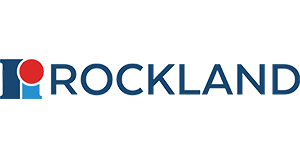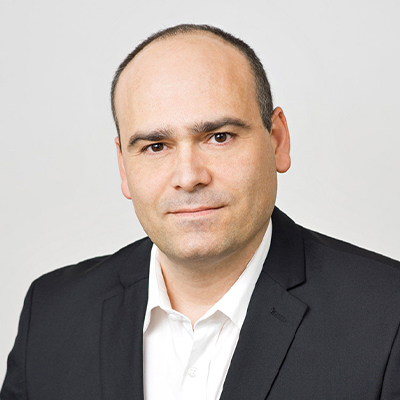rHuman RANKL Protein
rHuman RANKL Protein
SKU
ROC009-001-C22
Packaging Unit
10 µg
Manufacturer
Rockland
Availability:
loading...
Price is loading...
Application Note: RANKL Recombinant Protein is suitable as a control for polyclonal or monoclonal anti-RANKL in immunological assays.
Concentration Value: 0.1 mg/mL
General Disclaimer Note: This product is for research use only and is not intended for therapeutic or diagnostic applications. Please contact a technical service representative for more information. All products of animal origin manufactured by Rockland Immunochemicals are derived from starting materials of North American origin. Collection was performed in United States Department of Agriculture (USDA) inspected facilities and all materials have been inspected and certified to be free of disease and suitable for exportation. All properties listed are typical characteristics and are not specifications. All suggestions and data are offered in good faith but without guarantee as conditions and methods of use of our products are beyond our control. All claims must be made within 30 days following the date of delivery. The prospective user must determine the suitability of our materials before adopting them on a commercial scale. Suggested uses of our products are not recommendations to use our products in violation of any patent or as a license under any patent of Rockland Immunochemicals, Inc. If you require a commercial license to use this material and do not have one, then return this material, unopened to: Rockland Inc., P.O. BOX 5199, Limerick, Pennsylvania, USA.
Other Performance Data: RANK ligand is fully biologically active when compared to standard. The activity is determined by activity of RAW-Blue™ cells using a concentration of ≤50ng/ml. Endotoxin level as measured by LAL typically ≤1 EUs/µg.
Physical State: Lyophilized
Purity and Specificity: Purity was determined to be greater than 98% as determined by analysis by RP-HPLC and by reducing and non-reducing SDS-PAGE.
Background: The secreted cytokine RANKL (Receptor Activator of Nuclear factor kappa-B Ligand) is critically involved in osteoclastic differentiation and activation and in the regulation of specific immunity. RANKL exists as a homotrimer, is glycosylated, and occurs in 3 forms: cell-bound RANKL, which is expressed by osteoblast lineage cells, soluble RANKL (sRANKL), which is expressed by activated T lymphocytes, and a truncated ectodomain form derived from the cell-bound RANK Ligand, which is enzymatically processed by TACE (TNF-alpha converting enzyme (TACE; ADAM-17)). All three forms stimulate their specific receptor, RANK, which is located on osteoclastic and dendritic cells. RANKL binds to TNFRSF11B/OPG and to TNFRSF11A/RANK. RANKL augments the ability of dendritic cells to stimulate naive T-cell proliferation. It may be an important regulator of interactions between T-cells and dendritic cells and may play a role in the regulation of the T-cell-dependent immune response. It may also play an important role in enhanced bone-resorption in humoral hypercalcemia of malignancy. Expression of RANKL is highest in the peripheral lymph nodes, weak in spleen, peripheral blood leukocytes, bone marrow, heart, placenta, skeletal muscle, stomach and thyroid and is up-regulated by T-cell receptor stimulation. RANKL is secreted in the soluble form. Defects in TNFSF11 cause osteopetrosis. Recombinant human soluble RANKL produced in E.coli is a single, non-glycosylated polypeptide chain containing 176 amino acids and having a molecular mass of 20,006 Daltons.
Low Endotoxin: Yes
Other: User Optimized
Concentration Value: 0.1 mg/mL
General Disclaimer Note: This product is for research use only and is not intended for therapeutic or diagnostic applications. Please contact a technical service representative for more information. All products of animal origin manufactured by Rockland Immunochemicals are derived from starting materials of North American origin. Collection was performed in United States Department of Agriculture (USDA) inspected facilities and all materials have been inspected and certified to be free of disease and suitable for exportation. All properties listed are typical characteristics and are not specifications. All suggestions and data are offered in good faith but without guarantee as conditions and methods of use of our products are beyond our control. All claims must be made within 30 days following the date of delivery. The prospective user must determine the suitability of our materials before adopting them on a commercial scale. Suggested uses of our products are not recommendations to use our products in violation of any patent or as a license under any patent of Rockland Immunochemicals, Inc. If you require a commercial license to use this material and do not have one, then return this material, unopened to: Rockland Inc., P.O. BOX 5199, Limerick, Pennsylvania, USA.
Other Performance Data: RANK ligand is fully biologically active when compared to standard. The activity is determined by activity of RAW-Blue™ cells using a concentration of ≤50ng/ml. Endotoxin level as measured by LAL typically ≤1 EUs/µg.
Physical State: Lyophilized
Purity and Specificity: Purity was determined to be greater than 98% as determined by analysis by RP-HPLC and by reducing and non-reducing SDS-PAGE.
Background: The secreted cytokine RANKL (Receptor Activator of Nuclear factor kappa-B Ligand) is critically involved in osteoclastic differentiation and activation and in the regulation of specific immunity. RANKL exists as a homotrimer, is glycosylated, and occurs in 3 forms: cell-bound RANKL, which is expressed by osteoblast lineage cells, soluble RANKL (sRANKL), which is expressed by activated T lymphocytes, and a truncated ectodomain form derived from the cell-bound RANK Ligand, which is enzymatically processed by TACE (TNF-alpha converting enzyme (TACE; ADAM-17)). All three forms stimulate their specific receptor, RANK, which is located on osteoclastic and dendritic cells. RANKL binds to TNFRSF11B/OPG and to TNFRSF11A/RANK. RANKL augments the ability of dendritic cells to stimulate naive T-cell proliferation. It may be an important regulator of interactions between T-cells and dendritic cells and may play a role in the regulation of the T-cell-dependent immune response. It may also play an important role in enhanced bone-resorption in humoral hypercalcemia of malignancy. Expression of RANKL is highest in the peripheral lymph nodes, weak in spleen, peripheral blood leukocytes, bone marrow, heart, placenta, skeletal muscle, stomach and thyroid and is up-regulated by T-cell receptor stimulation. RANKL is secreted in the soluble form. Defects in TNFSF11 cause osteopetrosis. Recombinant human soluble RANKL produced in E.coli is a single, non-glycosylated polypeptide chain containing 176 amino acids and having a molecular mass of 20,006 Daltons.
Low Endotoxin: Yes
Other: User Optimized
| SKU | ROC009-001-C22 |
|---|---|
| Manufacturer | Rockland |
| Manufacturer SKU | 009-001-C22 |
| Package Unit | 10 µg |
| Quantity Unit | STK |
| Conjugate | Unconjugated |
| Product information (PDF) | Download |
| MSDS (PDF) |
|

 Deutsch
Deutsch










